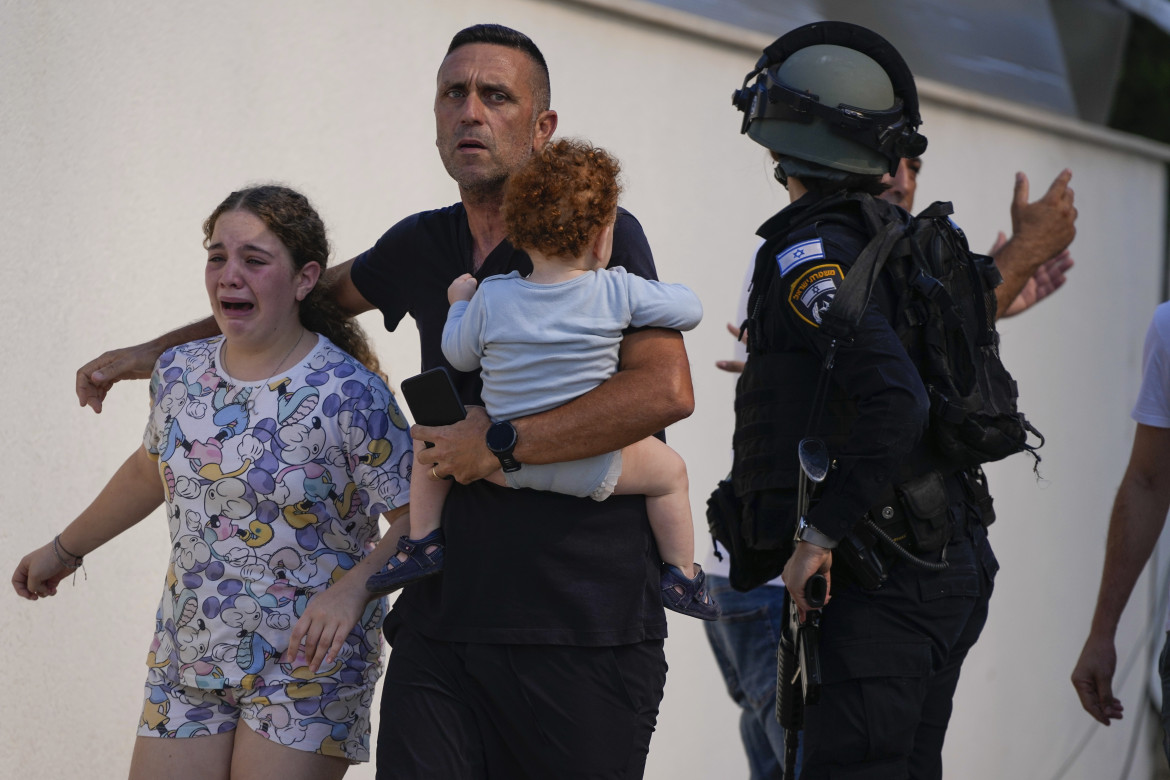Commentary
The Hamas attack suggests a new ‘balance of terror’ scenario
There is a widespread tendency, even in Western countries, to record this Hamas attack not so much as terrorism but as a war crime, equating the Islamist militia with a surrogate of the state authority.

For a long time, the global political order has assigned a prominent role to terror. However, at least on the surface, the reference to terror has dramatically changed from the 20th to the 21st century. Simplistically, it has shifted from the “balance of terror,” which dominated the Cold War scenario, to the global war on terrorism initiated by the American response to 9/11.
These may seem distant events. Yet, recalling such a remote background can help us grasp the deeper meanings of the current crisis in Israel and Palestine because the events triggered by Hamas militants’ murderous attack clearly present, for the first time, a surprising mixture between the two faces of terror we were already familiar with. Perhaps they herald a new and much more destructive kind of balance of terror, to which we will have to learn to react with tools different from the past, so as not to risk being overwhelmed.
As we recall, the formula of the “balance of terror” was coined to describe the paradoxical standstill induced by atomic weapons, forcing the two superpowers to avoid direct confrontation, which would lead to a global catastrophe.
The nuclear threat thus imposed a kind of cooperation between the two fronts, strengthening deterrence policies. Terror served not only as a binder of the global order but also as a solid criterion for legitimizing power. It was assumed that only faithful alignment with one side or the other could truly protect against the atomic threat. The threat, therefore, kept opponents and reluctant allies in check, perpetuating the status quo, albeit something virtual: an anguishing possibility destined not to materialize, as long as one remained under the umbrella of established power.
In the terrorism of recent decades, panic has served an opposite function. The goal of terrorists was to show that the protection offered by power was actually illusory and ineffective. It was not about cementing the established order, but about causing its collapse.
Destruction and violence, therefore, had to be real and not virtual. They had to be exhibited spectacularly to push the highest possible number of potential rebels into action, including lone wolves, imitators, and psychopaths.
Hamas’ aggression against Israeli civilians has an evident affinity with this recent use of terror. It is confirmed by analogies with the Bataclan attack or the media techniques of ISIS. Atrocities were openly and spectacularly displayed to erase any illusion of security, mock the state’s promise of protection, and incite Palestinians to revolt. However, there is something more unsettling in this attack than just another variant of Islamist terrorism.
It is a symptom of the widespread tendency, even in Western countries, to record this Hamas attack not so much as terrorism but as a war crime, equating the Islamist militia with a surrogate of the state authority, albeit to denounce its criminal action. This opacity is not just ignorance of the law (as has also been suggested) but is rooted in the actual ambiguity of the situation.
To understand this, it is enough to remember that many observers, starting from the UN Secretary-General, have taken the recent events as an opportunity to reassert the “two peoples, two states” formula, which seemed reduced to little more than a ritual. The intention, of course, is to reaffirm the right of both to a homeland and self-determination.
On the other hand, recognizing Palestinians as a people, and therefore as a unified political entity, and, in perspective, as a virtual sovereign authority (a State), also means acknowledging their right to designate representatives of their collective will, who become the legitimate custodians of such sovereign power.
Proponents of the “two peoples, two states” formula usually have the Palestinian National Authority in mind, which for years has been a candidate to represent the hypothetical State of Palestine. However, it was Hamas, not the Palestinian National Authority, that won the elections in Gaza and the West Bank in 2006; and today, it would almost certainly be Hamas winning the elections in the West Bank (which have been postponed for 15 years). The fact is paradoxical because the Islamist organization has never shown any real interest in creating a Palestinian state alongside that of Israel, except in words.
A position exactly opposite to that of the most extreme fringes of the Netanyahu government, which explicitly deny non-Jews the right to have rights, thereby gaining consensus precisely in proportion to the extent of terror.
Just as during the Cold War, in both camps, terror allows those in power to legitimize themselves, win the loyalty of the masses, and dismiss any opposition as a form of high treason. However, unlike the past, the factions benefiting from mass panic are now the most intolerant, the most interested in exacerbating terror, and the quickest to unleash real destruction against any possibility of compromise. It is a reversed balance of terror, which empties any appeal to moderation and dialogue of meaning.
But what causes such a reversal? What network of factors makes the incitement to hatred prevail not only and not so much in frightened and resentful masses but in the political calculation of the prevailing factions on both sides, legitimizing each other in a kind of destructive cooperation?
What seems certain is that the segregational logic with which a single state, Israel, effectively governs the territory where two communities live, reserving any real rights to only one of the two, influences this. A push towards segregation that concerns us closely because, even in a completely different context, it is animating the reaction to migration flows in Europe as well.
Originally published at https://ilmanifesto.it/dopo-lattacco-di-hamas-verso-un-nuovo-equilibrio-del-terrore on 2023-10-14
